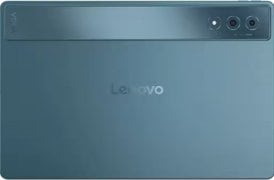- Home
- Mobiles
- Mobiles Reviews
- Google Pixel 10 Pro Fold Review: Hinging on Innovation
Google Pixel 10 Pro Fold Review: Hinging on Innovation
Google’s third attempt at making a foldable sees it get a few things right. Here's our Pixel 10 Pro Fold review.
The Google Pixel 10 Pro Fold is priced at Rs. 1,72,999 in India
It has been a while since foldables took centre stage as the most premium devices in any smartphone brand's lineup of products. Apple has yet to showcase its first foldable (which it has been working on for a while), a move that is expected to give a boost to this smartphone segment that seems stuck in the doldrums when it comes to consumer adoption. At the same time, there is a new breed of foldable by Huawei that was launched in China last year, but went global this year. The “tri-folds” as they are currently referred to, are indeed what everyone dreamt foldables would be. A smartphone-sized device that, like something out of Westworld, would open up into a full-sized rectangular tablet serving two use cases.
As we wait for Samsung to announce its first tri-folding device, we have Google, which has come up with its third iteration of the Pixel Fold, now called the Pixel 10 Pro Fold. While it looks the same as last year's Pixel 9 Pro Fold, Google has, in many ways, overhauled its innards to a great extent. There's a new gearless game-changing hinge and magnetic wireless charging in the form of Pixel Snap as well. While it sounds like a big leap in terms of durability and practicality for foldables in general, Google has been a bit slow to deliver on the foldable software front (even though it is the one that makes Android as we know it). Have things changed? And have the cameras improved to “Pro” standards? Read on to find out!
Google Pixel 10 Pro Fold Design: Big updates… on the inside
- Dimensions
- Folded - 155.2 X 76.3 X 10.8mm
- Unfolded - 155.2 X 150.4 X 5.2mm
- Weight - 258g
- Durability - IP68
It may appear identical to the Pixel 9 Pro Fold in terms of its overall design, but the new Pixel 10 Pro Fold has grown heavier by 1 gram. Google has maintained the 9 Pro Fold's design language and stuck with flat sides all over, whether it's the rear panel, the camera module or the frame. While I would have appreciated a new design year after year, it's interesting to see how Google has retained the older foldable's footprint but added plenty more on the inside.
![]()
The rear panel has a slightly rougher texture that is prone to smudges, but the brighter grey/lilac Moonstone colour does a good job of hiding them
Within the same footprint, Google has now squeezed in a higher capacity battery, a magnetic wireless charging system branded as ‘Pixel Snap', and a new hinge that allows the phone to resist both dust and water.
There sure is a lot banking on that new hinge. Google claims it's a breakthrough of sorts with its gear-less mechanism which, besides providing better durability, can also withstand dust and grains of sand—a first for the industry. The new hinge also lets the cover display spread out a bit, allowing it to be slightly bigger compared to the previous model.
![]()
The new hinge also features a smooth opening mechanism, and since the device's two halves aren't as thin as Samsung's and Vivo's, there's no struggle when opening it either!
That said, the phone isn't light and still weighs over a quarter of a kilo! This makes the Pixel 10 Pro Fold the heaviest smartphone in the segment. After using the other two, I can conclude that it does get quite tiring to hold up the Pixel after the new phone excitement dampens.
![]()
The stricter IP68 ratings have improved the overall fit and finish of the phone, which had panel gaps last year (where the glass panels met the frame). Minus the heft, it feels premium with perfectly machined edges and perforations that won't cut your palm or fingers, no matter how you hold it.
Google Pixel 10 Pro Fold Display: A bit bigger but a lot brighter!
- Display size
- Cover - 6.4-inches, 1,080 X 2,364 pixels, full-HD+
- Main - 8.0-inches, 2,076 X 2,152 pixels
- Display type Cover - OLED (60-120Hz), Main - LTPO OLED (1-120Hz)
- Display protection - Cover: Gorilla Glass Victus 2, Main: UTG
As you can tell from the specifications listed above, the cover display has grown a wee bit bigger thanks to the extra space provided by the new hinge. The display produces near-accurate colours in the Natural colour mode, which I preferred over the punchy Adaptive screen colour mode that the phone defaults to. While I appreciate the slightly bigger display size, its borders are still quite thick compared to Samsung and Vivo's cover displays.
![]()
Visually, you really can't tell the difference between the older and the newer cover display because of its chunky bezel, but it is a bit wider when used vertically, making typing more comfortable
The main, folding display too has a chunky bezel, but this is somewhat in line with what other brands offer. You can feel the crease when using the panel, but it's not visible when the display is being used. Google has not improved anything in terms of durability, and I noticed no scratches or dents even after playing games on it during the testing period.
![]()
While they may appear familiar, both displays have noticeably improved brightness and are perfectly legible when viewed under direct sunlight.
Google Pixel 10 Pro Fold Software: The good, the bad and the ugly
- Android version - 16
- Software - Pixel UI
- Software commitment - 7 years OS + SMRs
If you have been using a smartphone with Android 15, Google's Pixel UI, which goes all out with its Material 3 Expressive design philosophy, will feel very different. There are tons of new jumpy animations and oversized typography where you won't expect it, and a smoother overall feel because of the new and smoother transitions. Things can get a bit outlandish depending on the colour palette you select, but you can tone things down using the contrast options.
![]()
What's still missing are some foldable-friendly multitasking features. Google's app multitasking is limited to using two apps in split-screen mode. This is a far cry from what Vivo's X Fold 5 and Samsung's Galaxy Z Fold 7 provide.
As with every new Pixel smartphone, there are new AI features. Magic Cue works by pulling out useful and relevant data from Google apps like Gmail, Calendar, Messages, Keep notes, Screenshots and Contacts, and surfaces them as information chips precisely when needed. Once activated, it takes about a day (Google claims you should leave it overnight) for Magic Cue to process all of your data in your apps. Once all of the processing is done, the short and precise information chips should show up (with a rainbow outline) when you are typing or searching in the above-mentioned apps.
And that's how Magic Cue is supposed to work. But here are a few things I noticed
Firstly, you need to save the information if you want Magic Cue to suggest it to you. Secondly, while it will surprise you at times, there are instances when it does not “get the cue”. It will take its own sweet time when it comes to suggesting information chips, even if you are actively researching the same information in Google Maps, add it as a note in Keep and just took a screenshot of it in the Screenshots app.
During the two weeks I spent reviewing and testing this phone, I received a couple of useful and precise information chips.
Another reason for Magic Cue being not as useful, is the fact that nobody I know uses the Google Messages app for anything apart from receiving OTPs. India runs on WhatsApp and given that Magic Cue only works within Google's own apps, makes it less useful from the get go. However, given that GBoard also shows these cues, I do have hope that at some point, the feature may expand to third-party apps.
On a positive note, I absolutely dig the Camera Coach feature, which beautifully and systematically guides a user to click a better photo by giving out clear instructions. Since it's a coach, it gives you free will over what you want to do and will not attempt to correct you, but the bottomline is that you will end up with much better photos no matter who you are or which age group you belong to, provided you are willing to learn or be inspired.
Google Pixel 10 Pro Fold Performance: Does TSMC make a difference?
- Processor - Tensor G5, 3.78GHz, 3nm
- RAM - 16GB (LPDDR5X)
- Storage -256GB
A dampener of sorts for many who will reach out for the upgraded and improved Fold this year is the storage. Google retained the 16GB of RAM for valid reasons (multitasking and AI applications), but just like last year, sells only a 256GB variant of the foldable in India. For comparison, Vivo's X Fold 5 also retails in one option, but it comes with 16GB RAM + 512GB of storage, while Samsung offers 256GB, 512GB and 1TB options in India as well.
For reasons best known to Google, the company has blocked most of the benchmarking apps that we usually run for testing and comparison purposes. And so I was only able to run GFXBench, which showed scores of 43, 85 and 120 fps for its Car Chase, Manhattan 3.1 and T Rex test suites. While I was expecting better results from the TSMC-made Tensor G5 chip this year, the GFXBench scores were comparatively poor. For comparison, even the Tensor G4 in the Pixel 9 Pro Fold managed better with 78, 119 and 120 fps in the same tests!
![]()
Despite its skinny frame, the Pixel 10 Pro Fold does not get abnormally hot
While the limited benchmark scores did not impress, the phone chugged along just fine with no stuttering or hiccups when browsing through its software interface. The same applies to gaming. I played Call of Duty: Mobile at the default Very High graphics and Max frame rate settings, and the game was playable with no signs of struggle. Then I switched to Ultra mode, and it too worked smoothly with no visible problems. During normal usage both indoors and outdoors, the phone did not heat up. It did get hot when shooting 4K video, but nothing out of the ordinary when it comes to book-style foldables.
Google Pixel 10 Pro Fold Cameras: Far from “Pro”
- Main camera - 48-megapixel (OIS), f/1.7 aperture, AF
- Telephoto camera - 10.8-megapixel (OIS), 5X optical, f/3.1 aperture, AF
- Ultra-wide camera - 10.5-megapixel, 0.5X, f/2.2 aperture, AF
- Selfie cameras - 10-megapixel, f/2.2 aperture, AF (cover/main)
![]()
The Pixel 10 Pro Fold's camera hardware has remained the same as last year's model. But I was looking forward to some minor improvements, keeping the new processor in mind.
The primary camera shoots decent images, but these are a far cry from what most regular smartphones at and around this price point offer. There's also a noticeably cooler (bluish) colour tone, which can be adjusted using the built-in camera controls. Dynamic range is excellent, but these images are a bit low on resolved detail and appear somewhat soft. So, finer things like foliage in these photos don't appear clear or detailed either. Surprisingly, there's also some purple fringing when shooting on sunny afternoons. In low light, photos look great with good detail in the shadows, but don't pack much detail upon zooming in. I noticed some clipped highlights under bright sources of light as well. Images captured at 2X zoom appear noticeably soft and lack detail. (Tap images to expand)
This softness carries over when using the phone's rear Portrait mode (top image), which is locked at 1.5X and 2X zoom. Edge-detection isn't accurate, but skin tones are. But I did expect better detail. In low light, it's best to avoid the soft portrait photos and switch to Night mode for cleaner and more detailed captures (bottom image). (Tap images to expand).
The selfie cameras produce passable images that, at times, look a bit synthetic and photoshopped because of the poor software edge-detection. (Tap image to expand)
The photos from the telephoto are not the sharpest I have seen at this price point, but they do look quite good. Given the 10-megapixel sensor, the photos have good contrast and pack enough detail even in low light. I am pretty sure that these are Google's camera algorithms hard at work. (Tap images to expand)
10X zoom samples don't appear too shabby either (Tap image to expand)
The ultrawide camera captures pretty average photos (Tap image to expand)
For a smartphone priced upwards of Rs. 1,50,000, video quality is quite poor! Video captured at 4K resolution at 30 fps appears soft and dreamy, even though the dynamic range and colours appear just fine. They seriously lack clarity, as there's visible noise present even in the shadows when shooting in daylight. The same problems persist in low light, and even Google's Night Video Boost mode can't save the day.
Google Pixel 10 Pro Fold Battery: Definitely better
- Battery capacity - 5,015mAh
- Wired charging - 30W
- Wireless charging - 15W
- Charger in the box - No
The 300mAh bump in battery capacity, along with the 3nm chipset, does make this foldable last a lot longer than last year's mode,l and I easily managed a whole day of heavy usage (calls, gaming and camera) and a little over a day with moderate (casual) use.
The Pixel 10 Pro Fold in our HD video loop test lasted a solid 17 hours and 15 minutes on the cover display and 12 hours and 30 minutes on the main display, which is pretty impressive for a foldable. Last year's Pixel 9 Pro Fold in comparison lasted 12 hours and 50 minutes on the cover display and 8 hours and 8 minutes on the main display.
![]()
Pixel Snap makes wireless charging more convenient, allowing you to snap all sorts of official and third-party Qi2 and MagSafe accessories. But Pixel 10 Pro Fold's Qi2 speeds have been capped at 15W, unlike the Pixel 10 Pro's newer 25W standard.
As for the wired charging speeds, they remain similar to the previous model, managing a full charge at a rather slow 1 hour and 40 minutes when plugged into a 100W GaN PD charger. You can achieve faster times by purchasing Google's own PPS charger, which is sold separately.
Google Pixel 10 Pro Fold Verdict
The Google Pixel 10 Pro Fold is the foldable we should have got last year, as it would have given plenty of reasons for buyers to pick Google's foldable over Samsung's chubby design. But a lot changed with Samsung's Galaxy Z Fold 7 this year, and given the Pixel's average cameras, it is a bit hard to recommend it unless you are willing to settle in a few areas.
![]()
Google's Pixel 10 Pro Fold is far from perfect, but it does get a few things right this year
Samsung's Galaxy Z Fold 7 (from Rs. 1,74,999) lacks the IP68 rating of the Pixel 10 Pro Fold. But it is a whole lot lighter and feels fantastic to hold with its super slim design. Samsung's 200-megapixel camera also offers better overall quality compared to the Pixel's dated hardware, which is in desperate need of an upgrade. The powerful Qualcomm Snapdragon 8 Elite processor is another win for Samsung, but the smaller battery, because of its slim design, may see a few pick the Pixel over a Samsung this year. Pixel Snap, which is currently a Pixel-exclusive feature, is not a necessity either. And lastly, the Pixel is the one to go for if you hate waiting for software updates and crib about bloatware.
The Vivo X Fold 5 is competitively priced at Rs. 1,49,999 and is packed to the brim with plenty of software features, including Origin Workbench, which makes working with multiple apps a lot easier compared to Samsung and Google's multitasking capabilities. Vivo's foldable also packs a bigger battery and charges faster than the other two.
While it's easy to recommend the Vivo X Fold 5 over both Samsung's and Google's foldables, it's wise to keep in mind that out of the three brands, only Samsung provides an extended care program in India, which comes handy if you accidentally drop the device. So, pick your next foldable wisely!
Get your daily dose of tech news, reviews, and insights, in under 80 characters on Gadgets 360 Turbo. Connect with fellow tech lovers on our Forum. Follow us on X, Facebook, WhatsApp, Threads and Google News for instant updates. Catch all the action on our YouTube channel.
Related Stories
- Samsung Galaxy Unpacked 2025
- ChatGPT
- Redmi Note 14 Pro+
- iPhone 16
- Apple Vision Pro
- Oneplus 12
- OnePlus Nord CE 3 Lite 5G
- iPhone 13
- Xiaomi 14 Pro
- Oppo Find N3
- Tecno Spark Go (2023)
- Realme V30
- Best Phones Under 25000
- Samsung Galaxy S24 Series
- Cryptocurrency
- iQoo 12
- Samsung Galaxy S24 Ultra
- Giottus
- Samsung Galaxy Z Flip 5
- Apple 'Scary Fast'
- Housefull 5
- GoPro Hero 12 Black Review
- Invincible Season 2
- JioGlass
- HD Ready TV
- Laptop Under 50000
- Smartwatch Under 10000
- Latest Mobile Phones
- Compare Phones
- Poco F8 Ultra
- Poco F8 Pro
- Huawei Mate 80 RS Master Edition
- Huawei Mate 80 Pro Max
- Huawei Mate 80 Pro
- Huawei Mate 80
- Huawei Mate X7
- Honor 500
- Asus ProArt P16
- MacBook Pro 14-inch (M5, 2025)
- Poco Pad M1
- Poco Pad X1
- Honor Watch X5
- Huawei Watch Ultimate 2
- Acerpure Nitro Z Series 100-inch QLED TV
- Samsung 43 Inch LED Ultra HD (4K) Smart TV (UA43UE81AFULXL)
- Asus ROG Ally
- Nintendo Switch Lite
- Haier 1.6 Ton 5 Star Inverter Split AC (HSU19G-MZAID5BN-INV)
- Haier 1.6 Ton 5 Star Inverter Split AC (HSU19G-MZAIM5BN-INV)


















